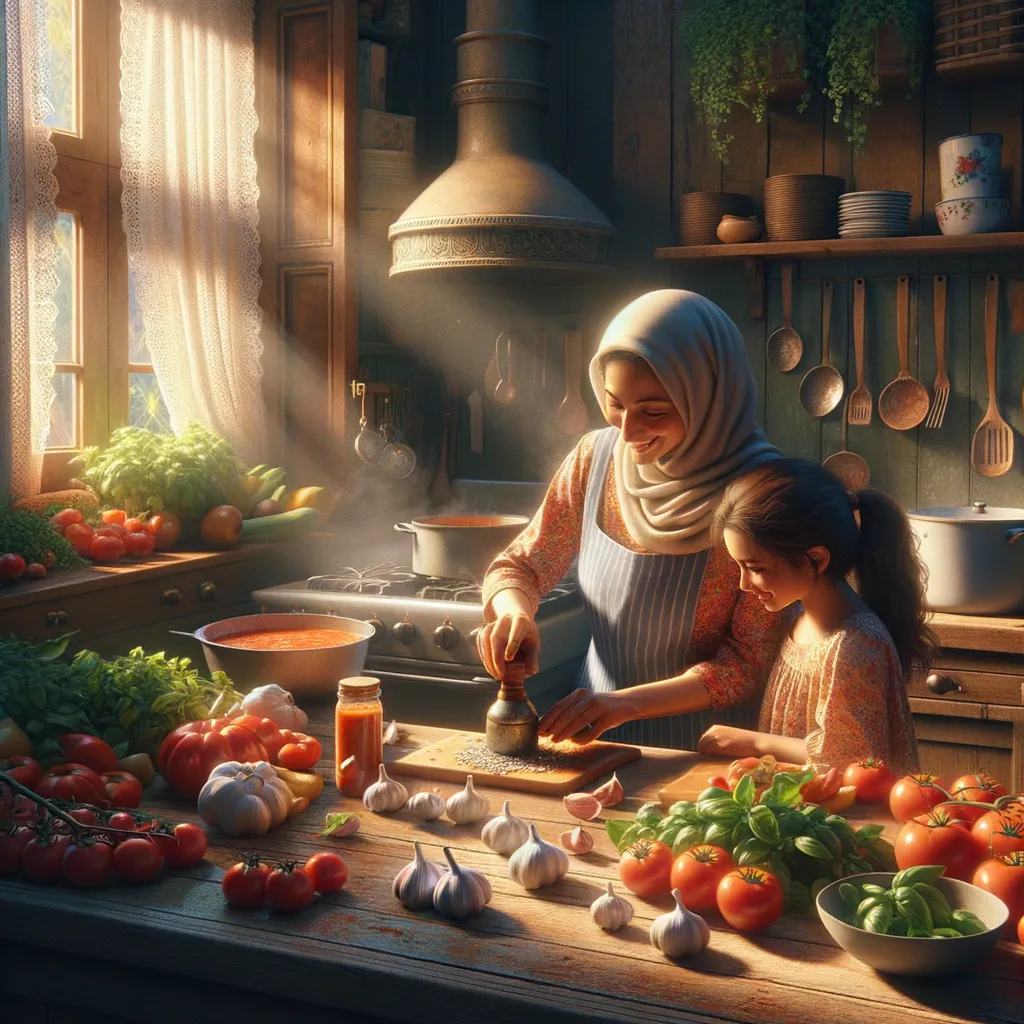Garlic Lessons: A Kitchen Clash Unveils Deeper Truths
In the cozy embrace of a childhood kitchen, the air thick with the aroma of simmering tomato sauce, a seemingly trivial debate over garlic preparation sparked an unexpected revelation. What began as a lighthearted clash between a mother’s traditional wisdom and a daughter’s modern culinary zeal quickly escalated into a deeper exploration of their contrasting communication styles. As tensions mounted, the realization dawned: the argument was not just about garlic, but a reflection of their lives, rich with experience and youthful ambition. Choosing to step back instead of digging in, the daughter invited her mother to share her method, transforming the conflict into a collaborative dance of flavors that softened their hearts. From that day forward, the kitchen became a sanctuary of understanding, teaching them that even the smallest disagreements can unveil profound truths about connection and growth.
In the memory of September 26, 2001, I find myself standing in the cramped kitchen of my childhood home, where the scent of simmering tomato sauce mingled with the crisp autumn air filtering through the open window. It was an ordinary day marked by the hustle of dinner preparations and the familiar clatter of dishes, but an unexpected spark of disagreement ignited between my mother and me. We were debating the best way to prepare the garlic, a seemingly trivial matter that would soon unravel into a lesson on communication that I would carry with me for years.
The kitchen, often a sanctuary of laughter and shared stories, became a battleground over the merits of mincing versus smashing garlic. My mother, with her generations of culinary wisdom, advocated for the gentle smash, believing it released the essence of the garlic without overwhelming the dish. I, fueled by a newfound passion for cooking and the lure of trendy food blogs, insisted that mincing would provide a more refined texture. What began as playful banter soon morphed into a heated exchange, each of us stubbornly clinging to our culinary convictions.
As the argument escalated, I felt a wave of emotions crashing over me—frustration, confusion, and an unexpected pang of guilt. It struck me that our disagreement was not merely about garlic; it was a clash of styles, a reflection of our personalities. My mother, the traditionalist, thrived on intuition and the wisdom of experience, while I, the eager novice, sought validation through precision and modernity. In that moment, I realized that our communication styles were as distinct as our cooking methods.
The kitchen, usually filled with the warmth of familial love, now pulsed with tension. I could almost see the invisible barriers rising between us, each word a brick laid in a wall of misunderstanding. As I looked into her eyes, I saw not just my mother but a woman shaped by years of life lessons, her culinary choices steeped in history and emotion. My heart softened, and I understood that my approach, while well-intentioned, lacked the depth that comes from lived experience.
Then came the twist, an unexpected moment of clarity amid the simmering chaos. Instead of doubling down on my argument, I chose to step back. I took a breath, allowing the weight of my mother’s perspective to settle into my consciousness. I asked her to show me her method, to teach me the art of smashing garlic in her own way. This simple shift transformed the conflict into a collaborative exploration, a dance of flavors rather than a duel of opinions.
As we worked side by side, the garlic transformed beneath our hands, releasing its fragrant oils into the air, and with it, the tension began to dissipate. Each smash echoed with laughter, each minced piece a symbol of our newfound understanding. The triviality of the disagreement faded into the background, replaced by a profound realization about the importance of listening, of valuing another’s perspective. It was a moment that transcended garlic, becoming a cornerstone of our relationship.
In the days that followed, I carried that lesson with me, not just in the kitchen but in every interaction. I began to see communication as a tapestry woven from the threads of our differing experiences and perspectives. The colors may clash at times, but they also create a richer narrative. I learned that sometimes the most mundane disagreements hold the power to reveal deeper truths about ourselves and our relationships.
Years later, as I prepare meals in my own kitchen, I often reflect on that day. The sight of garlic brings back memories of laughter and discovery, reminding me that every conversation is an opportunity to learn, to grow, and to connect. The trivial disagreement over how to prepare garlic became a metaphor for the intricate dance of communication, one that requires both vulnerability and openness.
As I ponder the layers of that memory, I find myself wondering about the countless other trivial moments that shape our lives. How often do we overlook these seemingly insignificant disagreements, only to find they carry the weight of our most profound lessons? In a world filled with noise and distraction, how can we cultivate the art of listening and understanding in our everyday interactions?
In the heart of the kitchen, a simple clash over garlic unveiled the profound truth that even the most mundane disagreements can transform into a rich tapestry of understanding and connection.



